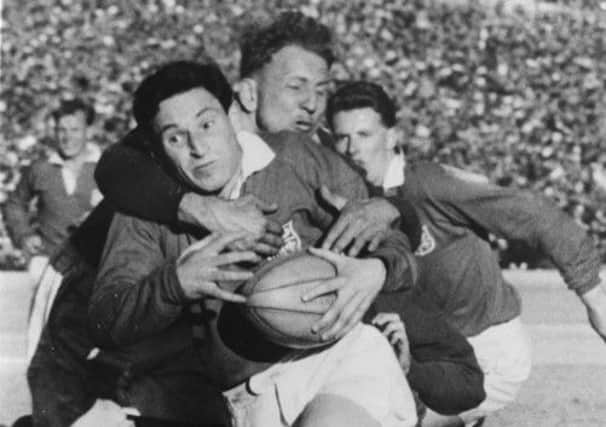Allan Massie: Morgan – the guiding genius of 1955 Lions


Cliff Morgan, who died this week, was one of the brightest. Many will remember him best as a marvellous broadcaster with a mellifluous voice. Some of them may not even know that he was a great rugby player, one of the finest of fly-halves. They still argue in Wales, however, about their greatest number 10: Cliff or Barry, Phil Bennett or Jonathan Davies.
In his playing days he was unquestionably one of the two greatest fly-halves of the two decades after the 1939-45 war. The other was Ireland’s Jackie Kyle, still happily with us. Kyle was the mastermind of Ireland’s first Grand Slam and the dazzling star of the 1950 Lions in Australia and New Zealand. Morgan shone in the Welsh defeat of the All Blacks in 1953, and bewitched, bothered and bewildered the Springboks as the guiding genius of the 1955 Lions. Those were the days when, no matter the result of a series, the Lions’ backs almost always outshone their southern hemisphere opponents. Which was the greater: Kyle or Morgan? Argument was fierce, necessarily inconclusive. Perhaps the best answer to such debates was given by the old St Andrews caddy when he was asked who was better: Bobby Jones or Young Tom Morris? He reputedly fixed the questioner with a steely glare, and replied: “Baith o’ them played pairfect gowff”. So let it be with Kyle and Morgan.
Advertisement
Hide AdAdvertisement
Hide AdBob MacEwen, who also died this week, was never as famous as Cliff Morgan, and I don’t suppose his name means anything to most rugby followers today. He won 13 Scottish caps between 1954 and 1958, years of recovery for us after the dark days that followed the 44-0 drubbing by South Africa in November 1951. The tide began to turn when we lost only 3-0 (one penalty goal) to New Zealand in his first season in the team, though it took another few matches before we actually won a game. MacEwen was first capped while at Cambridge University; in those days the Oxford-Cambridge match regularly featured half-a-dozen or more current internationalists. He subsequently played for London Scottish and Lansdowne in Dublin. So he was one of the fairly numerous exiles whose experience of playing rugby in Scotland was more or less restricted to Trial matches and internationals at Murrayfield. Nevertheless in 1954 he was in the middle of a front row with the resoundingly Scottish names: McLeod, MacEwen, McGlashan.
With the season just getting underway it’s too soon to evaluate the new regulations for the set scrum. This hasn’t stopped Leicester’s director of rugby, Richard Cockerill, currently suspended for abuse of an official, from complaining that England’s Premier Division coaches should have been consulted before the IRB dared to make these changes. Quite why anyone should suppose that the legislators should have thought it right to consult the club coaches of one league in one country before issuing instructions which apply wherever rugby is played beats me. Some will see Cockerill’s outburst as another example of English arrogance, but I daresay it was just foolishness and he was opening his mouth without engaging his brain – a habit which has landed him in trouble before now and accounts for his present period of suspension.
My impression , after watching three matches in the southern hemisphere Championship, is that the new regulations may well improve things. The change from “touch” to “bind” means that the two scrums are already in contact before the ball is put in. It allows the referee to see that the props are binding legally, and does away with the “hit”, or at least reduces its impact. Consequently there should be fewer cases of the whistle being blown for “early engagement”.
The other important requirement now insisted on by the IRB is not of course new. This is that the ball should be put in straight, something that has been in the laws of the game for at least as long as anyone can remember, but a law that has been persistently ignored by referees, and therefore by scrum-halves also, for many years. If referees now at last enforce this law, then we may actually see hookers again having to strike to win the ball.
Fewer collapsed scrums having to be reset will delight spectators, but the real test of the effectiveness of the new regulations will be whether we now see set scrum ball emerging quickly and being passed to the backs, something that has been as rare as hens’ teeth in recent years. It would be good to see an end to the practice of the ball being held in the back of the scrum in an attempt to win a penalty, but I fear this may be too much to hope for.
Nevertheless things may get better – at least until wily props find new means to subvert the law-makers’ best intentions.